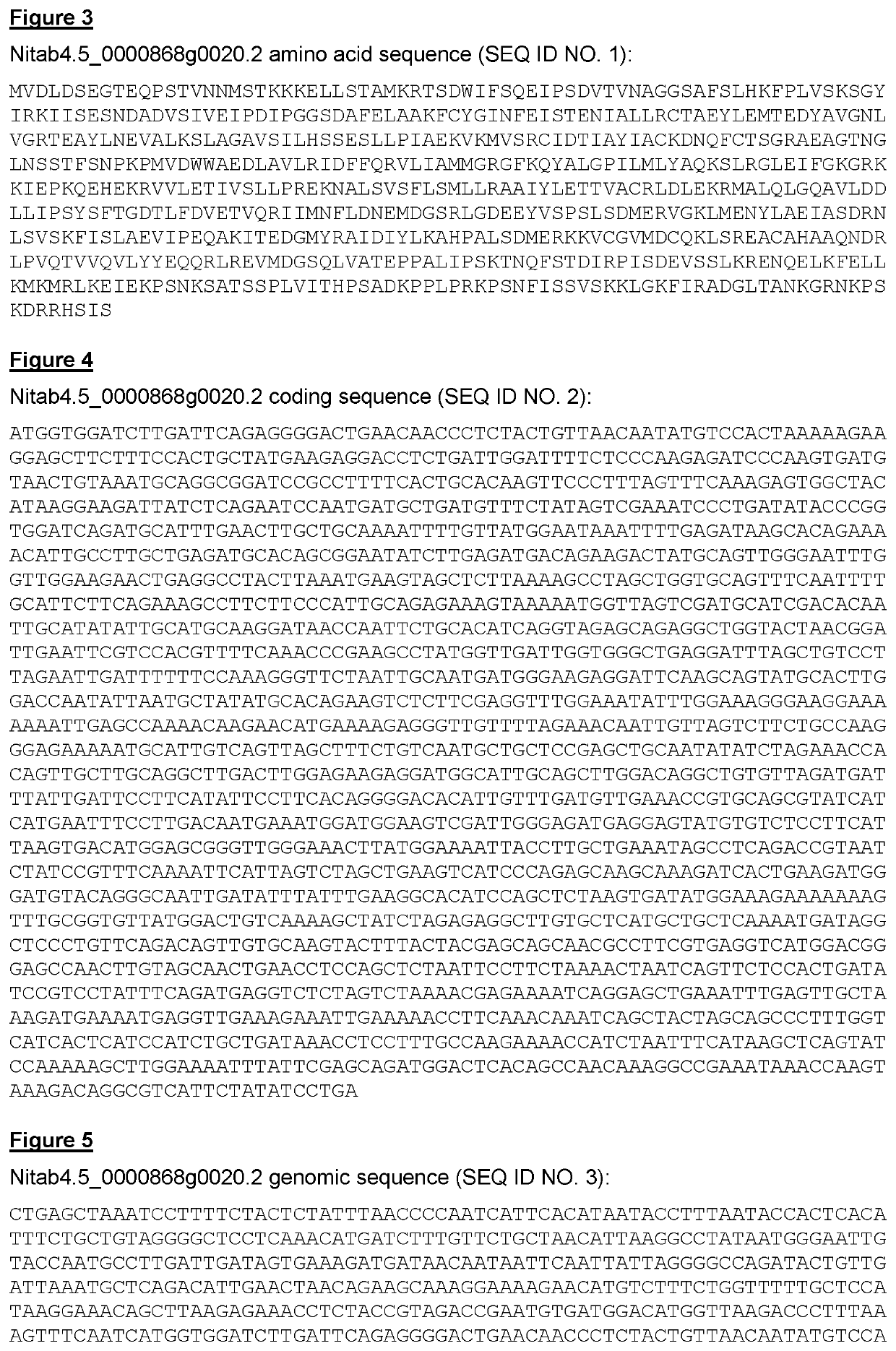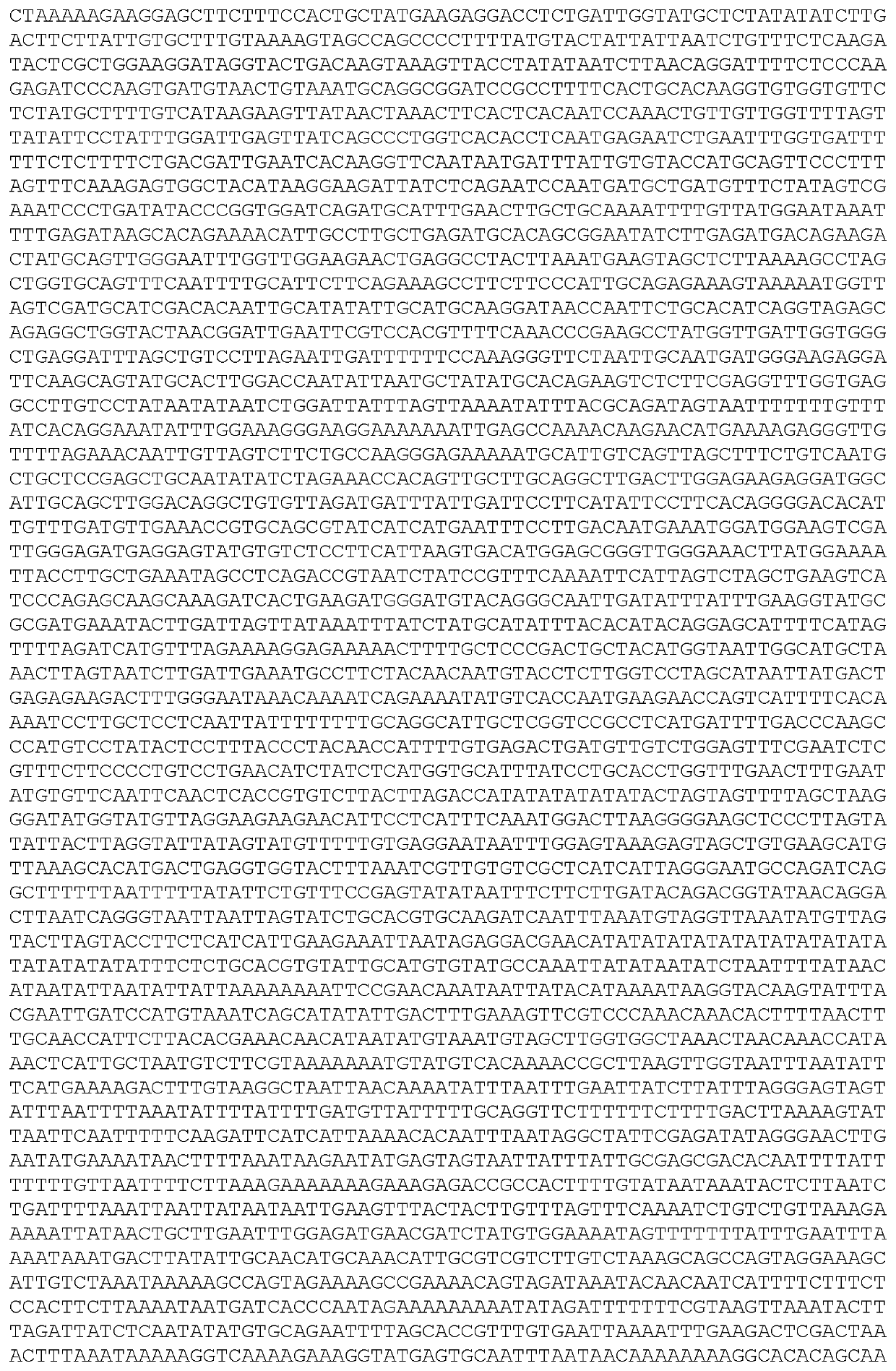Method for modulating the alkaloid content of a tobacco plant
a tobacco plant and alkaloid content technology, applied in tobacco, tobacco treatment, peptide sources, etc., can solve the problems of reducing nnn levels, no enzymes or genes responsible for producing pon, and no enzymes or genes have been identified so far. , to achieve the effect of modulating activity or expression, reducing tsna precursor content, and reducing or inhibiting activity or expression
- Summary
- Abstract
- Description
- Claims
- Application Information
AI Technical Summary
Benefits of technology
Problems solved by technology
Method used
Image
Examples
example 1
Overexpression of a BTB / POZ NPH3 Domain-Containing Protein Increases Alkaloid Content in Leaves
Methods and Materials
Cloning a BTB / POZ NPH3 Domain-Containing Expression Vector
[0636]The Nitab4.5_0000868g0020.2 BTB / POZ NPH3 domain-containing protein gene sequence (SEQ ID NO. 3) was amplified from a Gateway™ compatible cDNA library using primers located outside restriction sites flanking the gene sequence.
[0637]The resulting plasmid was sequenced and transformed into Agrobacterium tumefaciens GV3101pMP90 by heat shock and transiently expressed in tobacco leaves.
Transient Gene Expression
[0638]Agrobacterium tumefaciens GV3101 strains carrying the construct of interest were grown overnight in Luria-Bertani (LB) medium supplemented with appropriate antibiotics. Cultures were spun down and re-suspended in buffer containing 10 mM MgCl2, 10 mM MES pH 5.6 and 100 μM acetosyringone to OD600=0.6 and incubated for one hour at room temperature. Infiltration was performed with a needleless syringe i...
example 2
Expression of Antisense RNA Targeting Nitab4.5_00008680020.2 Decreases Alkaloid Content in Leaves
Materials and Methods
[0646]The Nitab4.5_0000868g0020.2 coding sequence was cloned in reverse orientation into a plant expression vector driven by the CERV promoter.
Results
[0647]Alkaloid content of 5-week-old tobacco leaves expressing Nitab4.5_0000868g0020.2 antisense RNA is shown in FIG. 2. Alkaloid content is represented relative to control and comprises three biological replicates analysed by t-test. Values are shown as means±SEM. Asterisks indicate statistical significance of P value ≤0.001
[0648]Suppressing Nitab4.5_0000868g0020.2 expression using antisense RNA leads to a decrease in alkaloid content in leaves, in particular a decrease in PON, nornicotine, anabasine and anatabine content.
Conclusions
[0649]Nitab4.5_0000868g0020.2 is a positive regulator of alkaloid content, in particular alkaloid content in leaves and is a regulator of pyridine alkaloids in tobacco.
example 3
Testing
[0650]The effects of the homologues of SEQ ID NO. 3, namely SEQ ID NOs 6, 9, 12, 15, 18, 21, 24, 27 and 30, are tested in assays as described in Examples 1 and 2.
PUM
| Property | Measurement | Unit |
|---|---|---|
| temperatures | aaaaa | aaaaa |
| particle size | aaaaa | aaaaa |
| particle size | aaaaa | aaaaa |
Abstract
Description
Claims
Application Information
 Login to View More
Login to View More - R&D
- Intellectual Property
- Life Sciences
- Materials
- Tech Scout
- Unparalleled Data Quality
- Higher Quality Content
- 60% Fewer Hallucinations
Browse by: Latest US Patents, China's latest patents, Technical Efficacy Thesaurus, Application Domain, Technology Topic, Popular Technical Reports.
© 2025 PatSnap. All rights reserved.Legal|Privacy policy|Modern Slavery Act Transparency Statement|Sitemap|About US| Contact US: help@patsnap.com



